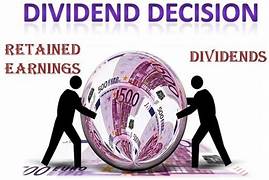How Dividend Policies Influence Investor Decision-Making
Dividend policies play a pivotal role in shaping investor decision-making, often serving as a key indicator of a company’s financial health and strategic priorities. Dividends, which represent a portion of a company’s earnings distributed to shareholders, are not merely cash payments; they carry significant informational value that investors use to assess potential risks and rewards. This article explores the various ways dividend policies influence investor behavior, touching on aspects such as income generation, market perception, and long-term investment strategies.
1. Understanding Dividend Policies
A company’s dividend policy determines how much profit is distributed to shareholders as dividends and how much is retained for reinvestment. These policies typically fall into three main categories:
- Stable Dividend Policy: Companies commit to paying consistent dividends, regardless of fluctuations in earnings. This approach signals reliability and appeals to risk-averse investors.
- Residual Dividend Policy: Dividends are paid from residual profits after all operational and investment needs are met. This policy prioritizes growth and may attract investors focused on capital appreciation.
- Hybrid Dividend Policy: A combination of stable and residual approaches, where companies maintain a minimum dividend while occasionally offering additional payouts based on performance.
Each policy reflects a company’s strategic priorities and influences how investors perceive its financial health and growth potential.
2. Dividends as a Signal of Financial Health
Investors often view dividends as a signal of a company’s financial stability and confidence in future earnings. When a company declares a dividend, it suggests that management is confident in its cash flow and profitability. Conversely, a dividend cut or suspension can indicate financial distress or declining earnings, prompting negative reactions from investors.
For example, during economic downturns, companies that maintain or increase dividends may reassure investors of their resilience. On the other hand, companies that reduce payouts risk losing investor trust and facing a decline in stock prices.
3. Catering to Income-Oriented Investors
Dividend policies significantly influence income-oriented investors, such as retirees and those seeking passive income. These investors prioritize regular cash flow and often gravitate toward companies with stable or high dividend yields.
For instance, sectors like utilities and consumer staples, known for their consistent dividend payouts, attract conservative investors seeking steady returns. A reliable dividend policy becomes a key criterion for these investors, shaping their portfolio decisions.
4. Impact on Stock Valuation and Market Perception
Dividend policies can directly affect a company’s stock valuation. High dividend payouts often lead to higher stock prices as investors perceive them as a sign of profitability and reduced risk. Conversely, a low or no-dividend policy may suggest that a company is reinvesting earnings for growth, appealing to growth-oriented investors.
Market perception is also influenced by dividend announcements. For example:
- Dividend Increases: Viewed positively as a sign of strong financial performance.
- Dividend Cuts: Often lead to negative market reactions, as they may signal financial instability.
The Dividend Discount Model (DDM), a popular valuation method, further illustrates the connection between dividend policies and stock prices. According to the DDM, a stock’s value is the present value of its future dividends. Thus, consistent dividend growth can enhance investor confidence and boost valuations.
5. Dividends and Long-Term Investment Strategies
For long-term investors, dividend policies play a crucial role in shaping portfolio strategies. Dividend-paying stocks are often considered a cornerstone of a long-term investment plan due to their potential to provide:
- Compounding Returns: Reinvesting dividends can significantly enhance total returns over time, particularly in tax-advantaged accounts like IRAs or 401(k)s.
- Reduced Volatility: Dividend-paying stocks tend to be less volatile, providing a cushion during market downturns.
- Inflation Protection: Companies with a history of growing dividends often provide returns that outpace inflation, preserving purchasing power.
Dividend policies also influence the allocation of assets between growth and income investments, enabling investors to align their portfolios with their financial goals and risk tolerance.
6. Tax Implications of Dividend Policies
The tax treatment of dividends can influence investor preferences. In many countries, dividends are subject to different tax rates than capital gains. For example, qualified dividends in the United States are taxed at lower rates than ordinary income, making them more attractive to certain investors.
However, tax considerations can also deter some investors. For instance, high-net-worth individuals in higher tax brackets may prefer companies that retain earnings and focus on capital appreciation to defer tax liabilities. As a result, companies must consider the tax implications of their dividend policies when targeting specific investor groups.
7. Influence of Macroeconomic Factors
Economic conditions can amplify the importance of dividend policies in investor decision-making. During periods of economic uncertainty, investors often seek the stability of dividend-paying stocks. For example:
- Recessions: Stable dividend-paying companies become safe havens for investors seeking predictable returns.
- Low-Interest-Rate Environments: Dividend stocks become more attractive as alternatives to low-yielding bonds.
Conversely, in a high-growth economic environment, investors may prioritize growth stocks, valuing potential capital gains over immediate dividends.
8. Sectoral Variations in Dividend Policies
Dividend policies vary significantly across industries, influencing investor behavior based on sector-specific expectations. For example:
- Technology and Biotech: Companies often reinvest profits into research and development, offering low or no dividends but appealing to growth-oriented investors.
- Utilities and Real Estate: Known for stable and high dividends, attracting income-focused investors.
- Consumer Discretionary: Dividend policies can be more variable, reflecting economic cycles and consumer demand.
Understanding these sectoral variations helps investors align their preferences with industry-specific dividend trends.
9. Balancing Dividend Policy with Growth
Companies face a trade-off between paying dividends and reinvesting profits for growth. While high dividends may attract income-oriented investors, excessive payouts can limit a company’s ability to fund expansion and innovation. Conversely, retaining earnings for growth can alienate investors seeking immediate returns.
Striking the right balance is critical. Companies like Apple and Microsoft have successfully transitioned from low-dividend growth stocks to high-dividend mature stocks, appealing to a broader range of investors.
10. Psychological and Behavioral Factors
Dividend policies also tap into psychological and behavioral aspects of investor decision-making. Many investors view dividends as tangible evidence of returns, providing reassurance even during periods of market volatility. This “bird in the hand” fallacy often leads investors to prefer dividend-paying stocks over non-dividend-paying ones, even if the latter offer higher potential returns.
Behavioral finance also highlights the role of anchoring, where investors use dividend yields as a reference point for evaluating stocks. Companies with attractive dividend yields are often perceived as more favorable, influencing investment decisions.
Conclusion
Dividend policies are a cornerstone of investor decision-making, influencing everything from income generation and stock valuation to long-term strategies and market perception. While dividends provide a sense of stability and immediate returns, their role extends far beyond simple payouts. They serve as signals of financial health, tools for portfolio diversification, and drivers of investor confidence.
For companies, designing an effective dividend policy requires balancing the needs of diverse investor groups, managing growth priorities, and adapting to macroeconomic conditions. For investors, understanding the nuances of dividend policies is essential for making informed decisions that align with their financial goals.
As financial markets continue to evolve, the interplay between dividend policies and investor behavior will remain a critical area of focus, shaping both corporate strategies and investment outcomes.


